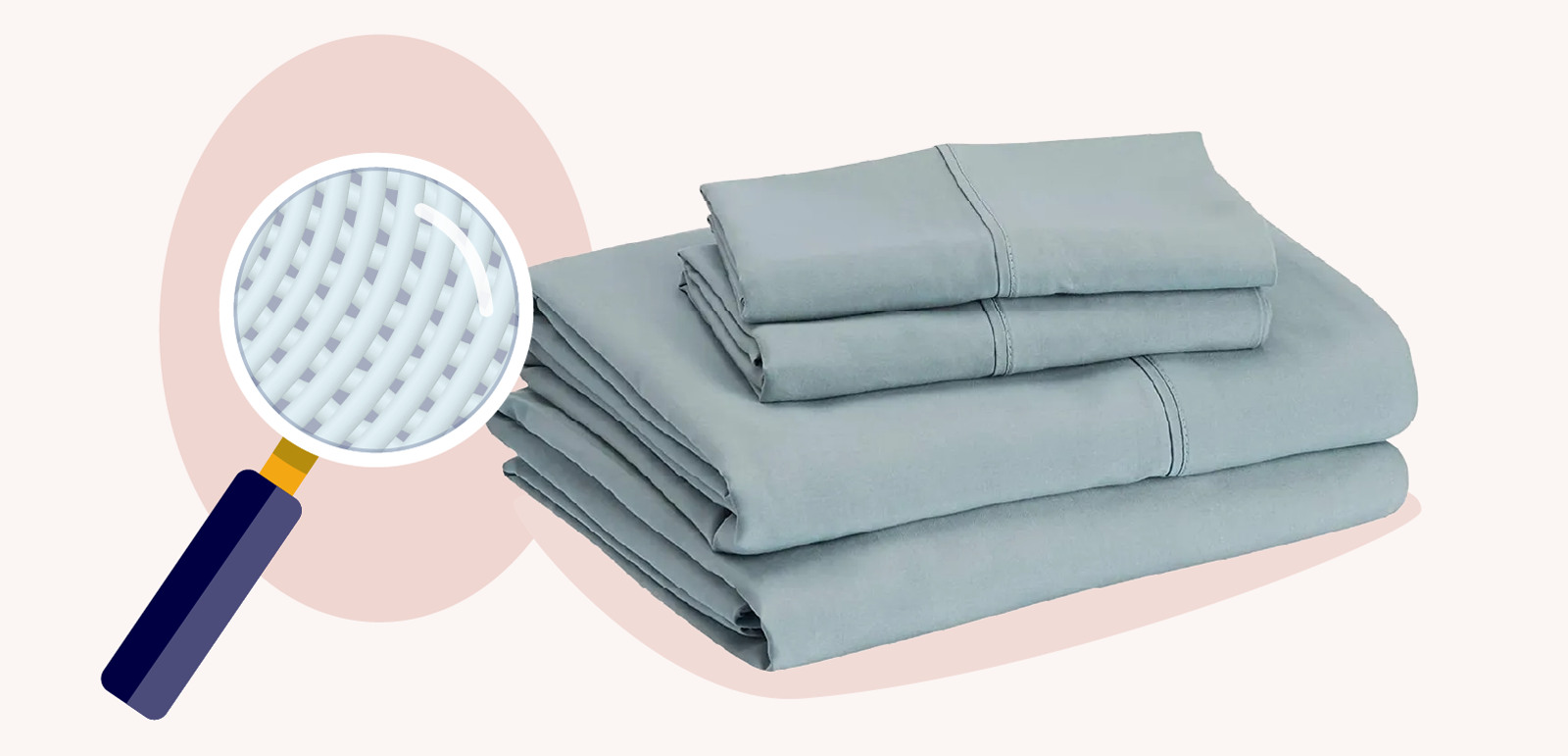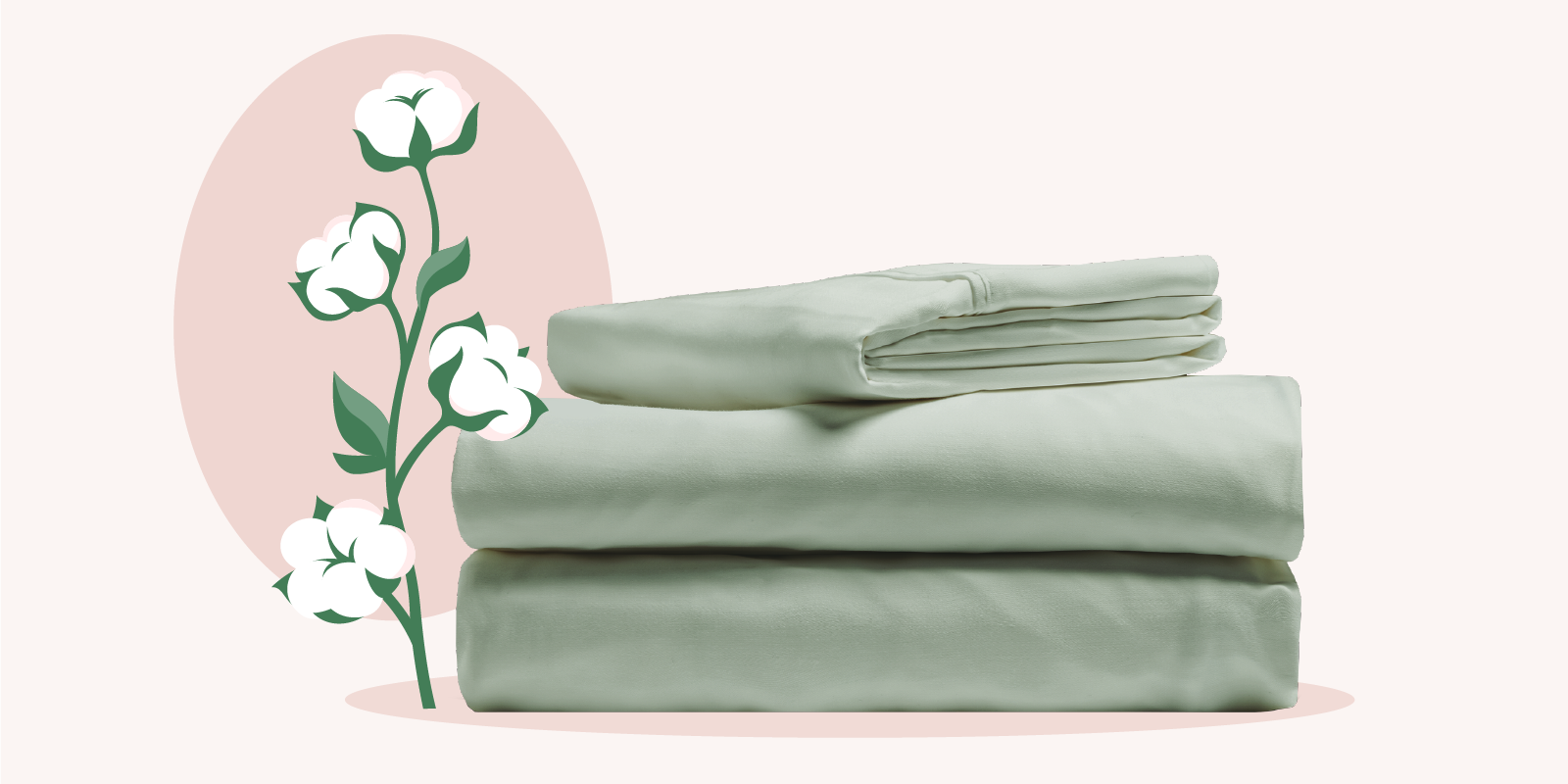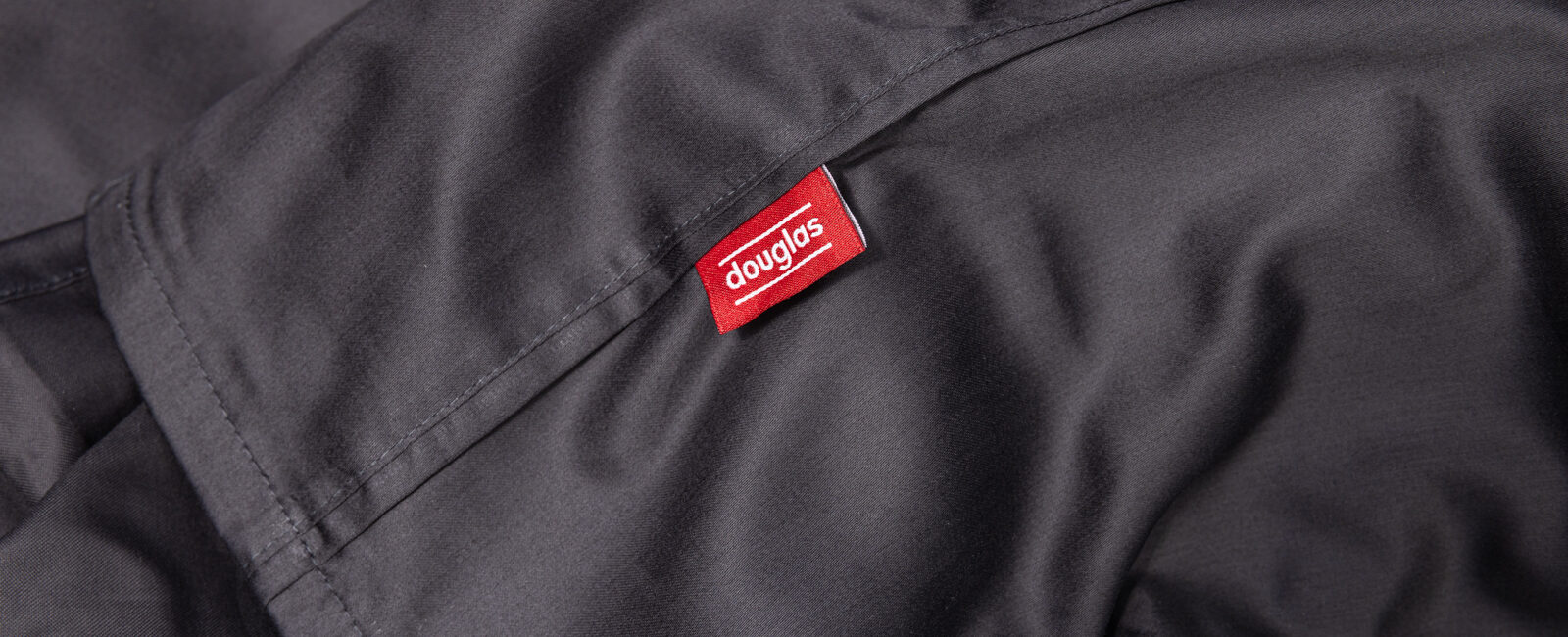Microfiber vs Cotton Sheets (2025)
Updated: March 31, 2025 | Published: September 26, 2024Cotton is a bedding material beloved by many. In fact, it’s the most commonly used material when it comes to bed sheets. Chances are high that you have cotton sheets right now in your bedroom, or have slept on crisp cotton sheets during your last hotel stay.
Microfiber sheets, in comparison, are praised for being affordable, lightweight, and smooth. They may not be as popular, but could microfiber sheets be better than reliable, versatile, breathable cotton?
In this guide, we’ll explore microfiber vs cotton sheets, compare their pros and cons, and help you discover what type of sheet is best for you.
What are microfiber sheets?
Microfiber is a fabric woven from very thin, lightweight threads made from polyester, nylon polymers, or syntheticized wood pulp.
They’re called “microfibers” because their diameter is smaller than that of most other materials, even silk (1/100th the diameter of a human hair). Microfibers are woven together to create a durable, soft, and lightweight material. Sheets made from this material are often low maintenance and wrinkle resistant, as well as affordable.
Because of their fine fibres and dense weave, microfiber sheets are less breathable than cotton. They can also hold static charges, especially between the flat and fitted sheet, which may attract dust and pet hair. Microfiber sheets retain heat well, making them ideal for colder weather, but they may not be as comfortable if you sleep hot or live in a warmer climate.
READ MORE: Polyester vs cotton sheets

Microfiber Sheets: Pros & Cons
| Pros | Cons |
|---|---|
|
|
What are cotton sheets?
Cotton is a popular plant fibre praised for its durability and versatility. Bedding can be made from different types of cotton fibres, like Egyptian, Pima, or Upland cotton. Long-staple varieties like Pima and Egyptian cotton produce smoother, sleeker sheets, while short-staple cotton like Upland gives a crisp, classic cotton feel.
Weave also affects the look and feel of cotton bedding. Percale, with its one-over-one-under pattern, creates crisp, breathable sheets with a matte finish. Sateen, woven in a one-under-three-over pattern, results in smooth, silky sheets with a subtle sheen.
Cotton is great for temperature regulation, making it suitable for both warm and cool sleepers. Though easy to care for, cotton can shrink or fade if washed at high temperatures, and some weaves are prone to wrinkling or pilling.
With a variety of types and weaves, cotton offers options for every sleeper. It’s available at a range of price points, from affordable to luxurious. Cotton is ideal if you’re seeking year-round bedding that’s easy to maintain and offers a wide range of looks and feels.

Cotton Sheets: Pros & Cons
| Pros | Cons |
|---|---|
|
|
What’s the difference between microfiber and cotton sheets?
Now that you’ve been introduced to microfiber and cotton sheets, we can explore the qualities of each material.
| Buying Factor | Microfiber | Cotton |
|---|---|---|
Cost | Often more affordable | Price range varies |
Appearance | Matte | Matte or a subtle sheen; certain weaves are prone to wrinkling |
Durability | Long-lasting with proper care | Long-lasting with proper care |
Cleaning & Care | Easy to care for;
| Machine washable, dryer safe;
|
Feel | Soft and smooth | Crisp and breathable, or smooth and silky |
Variety | Percale, sateen, waffle | Percale, sateen, twill, jersey, and more |
Quality | Indicated by GSM (grams per square metre) | Indicated by cotton type and thread count |
Temperature Control | Retains heat well | Breathable and temperature-regulating |
Sustainability | Can be derived from quick-growing woods or petroleum; not biodegradable | Takes a large amount of water to produce, but is biodegradable |
Best For | Sleepers looking for smooth, lightweight, affordable sheets that retain heat well | Sleepers looking for breathable sheets available in a wide variety of feels, looks, and prices |
Cost
Microfiber sheets are generally known for being affordable and durable. If they’re cared for properly, you shouldn’t need to purchase new microfiber sheets often.
Cotton sheets can vary widely in price because of the type of cotton used, as well as the bedding’s weave and sometimes thread count. There are very affordable cotton sheets that are durable, easy to care for, and readily available. More expensive options offer a luxury feel, but may require more careful laundering and could be harder to find.
Appearance
Microfiber sheets have a smooth, matte appearance and aren’t prone to wrinkling. Because of their fine fibres, however, they’re more likely to create static, which could attract pet hair and dust to your bedding.
There are different types of cotton sheets with different appearances. Short-staple cotton and percale weaves appear more matte and are prone to wrinkling. Long-staple cotton sheets and sateen weaves are smooth, lustrous, and less likely to wrinkle, but you’ll likely notice pilling.

As shown in the photo above, sateen–weave cotton sheets such as Douglas Egyptian Cotton Sheets have a smooth, lustrous appearance that highlights their quality and softness.
Durability
Microfiber material holds its colour well but may shrink in high heat. Microfiber is known to be durable, so your sheets should last you a while with proper care.
Cotton may fade, shrink, or pill over an extended period of time. You can prolong the life of your cotton sheets by following their care instructions properly, but your cotton bedding should still be quite durable regardless.
Cleaning and Care
Both cotton and microfiber are easy to care for. These materials are machine washable and dryer safe. That said, avoid using high heat when washing or drying. Extreme temperatures can shrink both cotton and microfiber, and cause fading or wrinkles in cotton. Avoid using bleach or fabric softener on microfiber sheets.
While microfiber sheets are wrinkle resistant, your cotton bedding may not be. For wrinkle-free cotton sheets, hang them up to dry in a shaded area, or tumble-dry them on low heat.
Feel
Microfiber sheets are smooth and soft because of their ultra-fine fibres. Microfibers are also often brushed before weaving to create a warm, almost fuzzy feel, making them a good option if you’re trying to stay warm while you sleep.
While cotton is most famous for its crisp feel, it can also feel smooth and silky. The feel will depend on the cotton type, weave, and thread count you purchase.

The image above of the Douglas Egyptian Cotton Sheets showcases the smoothness and crisp, high-quality finish that only premium cotton can provide.
Variety
Some microfiber base materials, like polyester, are more challenging to dye. This can limit your colour options. There are also fewer weaves available in microfiber bedding, with percale and sateen being the most common.
Cotton sheets are available in a wide variety of looks and textures. The most common cotton bedding options are percale and sateen weaves. Percale offers a crisp and breathable feel, while sateen is soft, silky, and smooth. Since cotton is easy to dye, both are often available in a wide variety of colours.
Quality
Both cotton and microfiber sheets are available in high-quality materials that should last you many years. However, some sheets are made with higher quality than others.
When shopping for microfiber sheets, don’t look at thread count. Microfiber threads are thin, so thread counts will be much higher, making it harder to measure quality. Instead, look for a set of sheets with a gram per square meter (GSM) count of 90–120.
When shopping for cotton bedding, look for 100% Egyptian cotton or organic cotton, with thread counts of 300–600. Thread counts over 800 are often a marketing tactic to appear appealing to less-savvy shoppers and don’t indicate a higher-quality sheet. In fact, this will often result in stiffer, less breathable bedding, which can be uncomfortable.
READ MORE: What is a good thread count for sheets?
Temperature Control
Because of its fine fibres and dense weave, microfiber bedding retains heat well. This is good news if you’re a cold sleeper or you need a little extra warmth in cooler weather. Microfiber bedding is often moisture-wicking, but it lacks breathability. If you’re an exceptionally hot, sweaty sleeper, you might find microfiber sheets uncomfortable.
Cotton absorbs and dissipates moisture so you don’t get sweaty while you sleep. Cotton sheets, especially with a percale weave, also offer breathability and allow excess heat to escape for optimal temperature regulation throughout the night. This is also true for many natural materials, like cotton, linen, or lyocell.
READ MORE: Lyocell vs cotton sheets
Sustainability
Microfiber is made from synthetic materials such as polyester, which is a petroleum-based product. Because of its synthetic nature, microfiber would take a long time to break down in a landfill—even hundreds of years. As such, microfiber sheets aren’t considered a sustainable or eco-friendly product.
Cotton is a natural material and often a popular choice for environmentally conscious shoppers. While cotton has been criticized for needing large amounts of land and water to produce, organic cotton is available as a more environmentally friendly option. Cotton is biodegradable and can decompose over time.
Best For
Microfiber sheets are best if you’re looking to stay warm while enjoying lightweight sheets. These sheets are affordable, widely available, easy to care for, and durable, meaning they will last you a long time.
Cotton bedding, on the other hand, is best if you’re looking for a temperature-regulating set of sheets that can be used year-round. These sheets are available in a wide variety of feels, appearances, colours, and price points. They’re easy to care for, making them a good option for most sleepers.
FAQ
What is the best thread count for cotton sheets?
For cotton sheets, look for a thread count of 300–600. Most sateen weaves will fall in this range. Percale weaves may be closer to a 300–400 count because of their one-over-one-under weave. However, it’s important to remember that the best thread count for sheets varies based on the material.
How do you wash cotton sheets?
Cotton sheets are fairly low maintenance and easy to care for. Simply place your sheets in the washer with your favourite detergent and wash them on low heat, then hang-dry or tumble-dry the sheets. Washing and drying your cotton sheets at lower temperatures can help avoid shrinking, wrinkling, and discolouring.
How do you wash microfiber sheets?
Microfiber sheets can be put in your washer and dryer at low temperatures. Avoid washing or drying your sheets at a high heat, as this can cause shrinking. Microfiber dries more quickly than other materials, so take care not to over-dry your sheets.
Are microfiber sheets good?
Microfiber sheets are good for wicking small amounts of moisture, retaining warmth, and offering a smooth feel. If you’re looking for an easy-to-care-for set of sheets at an affordable price, microfiber could be right for you.
Are microfiber sheets hot?
Microfiber sheets tend to retain heat more than other materials like cotton or linen. This makes them a good choice for colder weather or sleepers who tend to run cold. If you sleep warm, you may want to consider a more cooling set of bedding, like cotton or bamboo.
READ MORE: Bamboo vs cotton sheets
What is the best material for bed sheets?
The best material for your bed sheets will depend on your specific preferences and sleep needs. While some materials offer a crisp and breathable feel, others are smooth and silky to the touch. Different materials have different benefits.
How often should I wash my bed sheets?
You should wash your sheets once every week. This includes your fitted and flat sheets, and pillowcases. If you use a flat sheet, wash your duvet cover every 2 weeks to 1 month. If you sleep without a flat sheet, you should wash your duvet cover at the same time you wash your sheets.
Are cotton sheets better than microfiber?
When comparing cotton and microfiber sheets, both materials have advantages and disadvantages. While one material isn’t better than the other, each is a better fit for different sleepers. Decide what properties are most important to you in your bedding, and what will best help you achieve your sleep goals.
Microfiber is a good choice for a warmer sleep while still providing moisture-wicking properties. Microfiber sheets are easy to care for, durable, and wrinkle-resistant. However, they’re prone to becoming staticky and attracting dust, lint, or pet hair.
Cotton is a good choice for year-round temperature control, as well as sleepers who want a natural bedding option. Cotton is highly versatile and widely available in a large variety of options, with both affordable and luxury versions. Despite being fairly durable and low maintenance, cotton may shrink or fade when washed in high temperatures, and is more prone to wrinkling.
Our goal is to provide the information you need to find the mattress that’s right for you. Get started with some of our most popular mattress shopping resources:
- Best Mattress Guides: Best Mattress Canada, Best Mattress In a Box
- Reviews: Douglas Original, Logan & Cove Choice, Juno, Octave Vista
- Comparisons: Douglas vs Endy, Douglas vs Casper
We use independent, third-party engineering firms (commissioned by us) with the APEGA stamp of approval to conduct mattress testing on our behalf, using publicly available data. We review and test all mattresses on 40+ criteria we think are important to you, including price, country of manufacture, sleep trial, warranty, features, materials used, motion isolation and edge support ratings, customer satisfaction reviews, returns, and refunds.
